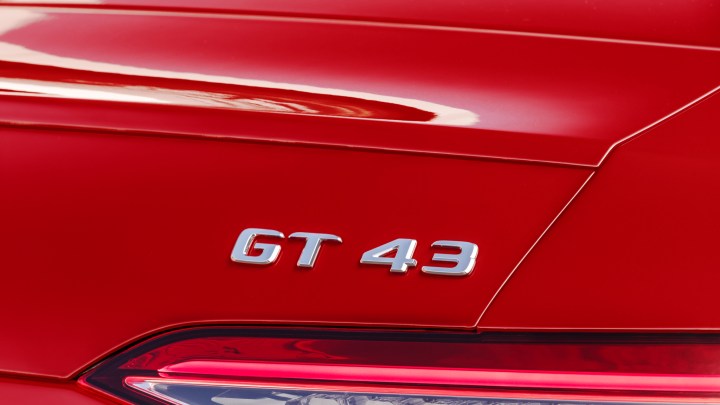Many of us take our vehicle to the car wash and vacuum its interior with some regularity, but we don’t always think about deep-cleaning to remove dirt and germs. Cleaning a vehicle’s interior can be tricky business, too, because there are so many different materials and each one reacts to cleaning products differently. There are a few simple steps you can take to make sure that you’re cleaning your vehicle’s interior and doing so in a way that is both effective and safe.
Further reading
- How to change the oil in your car
- How to jump a car battery
- How to defog the windows in your car
- How to wax your car
What’s your goal?

There are two avenues to consider here: Which products will clean your interior, and which products will sanitize your interior. Sanitizing is much more difficult than just cleaning, partly because removing viruses and bacteria is much harder and also because many of the products that actually work for sanitizing can be very damaging to the various materials in your vehicle’s interior. The good news is that many cleaning products and disinfecting wipes have detergents that are safe for the interior and effective at killing viruses and bacteria.
Which cleaners to use
Leathers and organic materials

Basic automotive cleaning wipes work very well to clean dirt and grime and usually have a mild detergent, which helps kill viruses and bacteria. If you don’t have a stash of car-cleaning products hanging around, you’re not completely out of luck. You can also repurpose other household cleaners to clean the leather upholstery in your car. Makeup removal wipes can work wonders on leather, because they usually contain some cleaning agent along with a moisturizer that will keep the organic materials from drying out.
Though it may be tempting to grab the rubbing alcohol to disinfect, there’s a good reason that you don’t shower in the stuff, and the same logic should apply when cleaning leather and other natural materials in your vehicle. Alcohol-based cleaners can dry out the natural oils that live in the hides. Believe it or not, you can use plain old soap and water in a pinch, which also happens to be very good at killing germs and viruses.
Synthetic materials
Interior materials like vinyl and synthetic leathers have improved to the point that it’s nearly impossible to tell them apart from the real thing in many cases, but the way they behave when cleaned is completely different. Man-made fibers don’t have the same porous structure that natural materials like leather do, which makes them much less susceptible to drying out when they come in contact with the wrong cleaner. You should still avoid using bleach, alcohol, ammonia, or other harsh cleaners, but wiping down with other products will be much easier. Use an automotive cleaner like Armor All to wipe down synthetic surfaces, or a cleaner that contains detergent.
Painted surfaces

Cleaning your vehicle’s paint with something like dish soap is not recommended, because it can strip wax and other protective materials and allow the paint to be damaged. You’ll run into the same issues when using alcohol. You can use bleach if you absolutely have to, but make sure that it has been heavily diluted. If you’re dead set on cleaning your vehicle’s exterior and don’t have any dedicated car wash solution, plain old water can blast away the worst of the dirt and grime without damaging the paint.
Mother Nature
If killing germs is your goal, you might be able to get away with using what Mother Nature already provides for free: Sunlight. Ford recently released a software update for its public service fleet vehicles that cranks up cabin temperatures to 133 degrees Fahrenheit, but in some parts of the country the sun will do that for you. If the interior of your vehicle sees sustained sunlight and blazing temperatures for at least 15 minutes a day, you’re likely killing many of the harmful bacteria and viruses that reside there.
What not to use
There are quite a few household cleaners that work wonders in your kitchen but will wreak havoc in your car. If you must use Lysol or Clorox wipes, make sure the product you’re using is free of bleach. Spray disinfectants can also be tricky, because they only kill bacteria and viruses on contact, so you’ll have to be sure you’re spraying on every single surface for the cleaner to be effective. Also avoid cleaners that contain ammonia, especially when using them on and around the electronics and screens in your vehicle. Ammonia can strip protective coatings and damage sensitive touchscreens.
Public transportation

Those of us who have to take the bus or use a ridesharing service like Uber or Lyft are in a bit more stressful situation, because the transportation we use every day is also used by hundreds of other people on a regular basis. If you find yourself stressing over who touched the door handle before you, there are a few easy fixes. Personal sanitary wipes that contain alcohol are a great way to wipe down vehicle door handles and grab handles on public transit. You won’t be able to do much about the seats — most Uber drivers will frown upon having someone scrubbing away at their vehicle’s interior — but you can make sure to wash your hands thoroughly after riding.



